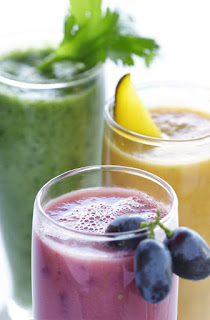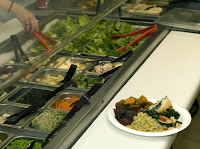Smoothies can help you get fruits in your diet if you don’t enjoy eating fresh, frozen or canned fruit. Smoothies can be a good source of calcium, protein and fiber (if it has milk or yogurt) and Vitamins A and C (from the fruits or veggies). But they can also be a source of unwanted extra calories and sugar. Keep these tips in mind for the healthiest smoothie choice:
- If calories are your concern, choose a smoothie made with low-fat milk or yogurt.
- When comparing store-bought or prepared smoothies from fast food restaurants or other venues, seek out nutrition information online or in the store. Compare calories and sugar. Remember, 1 teaspoon of sugar is about 4 grams of sugar. If your smoothie has 30 grams of sugar, you are getting more than 7 teaspoons of sugar!
- Consider cost and calories when buying store-bought smoothies. The calories can really add up, especially if you choose a larger size. Choose the smallest size smoothie to keep calories in check.
- Making smoothies at home? Choose fruits that are in season to keep it low cost. If you have fruit that is overripe, smoothies are a good way to use it up.
- Smoothies are a great way to add veggies to your diet. Add a handful or more of spinach along with other ingredients. It won’t affect the taste but will add a nutritious ‘kick’ to your smoothie. Try this Mango Kiwi Smoothie – it contains fruit, yogurt and spinach.
- Pump up the flavor of your smoothie by adding cinnamon, nutmeg, vanilla extract or cocoa powder instead of adding extra sugar or sweetener.
For more recipes, do a search for "smoothie" on MissouriFamilies.org.
Contributor: Ellen Schuster, M.S., R.D., Associate State Specialist, University of Missouri Extension, schusterer@missouri.edu, 573-882-1933






